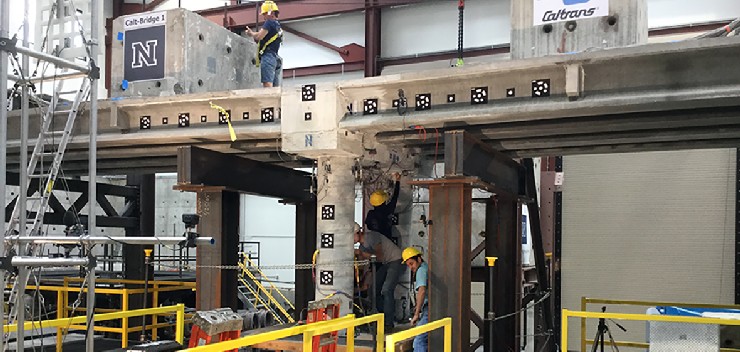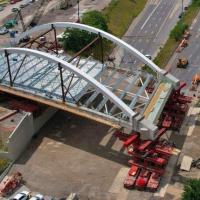The live simulation was designed to test new materials, connections and construction techniques with the goal of creating safer structures and quicker rebuilding times following earthquakes.
The university carried out the testing of the 91-tonne, 21m-long two-span model on three large shake tables in its Reno Earthquake Engineering Laboratory. The test mimicked the large ground motions of the 1994 Northridge, California earthquake, but amplified them to a magnitude 7.5.

The innovations in the bridge come from connections and from the use of ultra-high performance concrete (UHPC). The goal for using these connections and UHPC is to expedite bridge construction substantially. The five connection types are steel pipe pins, grouted ducts, UHPC deck joints, high-strength grout pocket deck-girder connections and UHPC deck cap beam connections. The researchers installed over 400 sensors to record the forces of the earthquake simulated in the lab.
“Specifically, the objective of the study is to design two large-scale bridge models incorporating some of the most promising ABC connections and components and test these under bidirectional earthquakes on massive shake tables to assess the performance of various components and connections and the interaction among them,” said the project’s principal investigator, Saiid Saiidi, who is from the Department of Civil & Environmental Engineering and is the director of the Center for Advanced Technology in Bridges and Infrastructure.
The study, funded by the California Department of Transportation, investigates the seismic response of bridges that are constructed with precast components and connections at the system level and is intended to help facilitate the adoption of ABC in the field and the development of seismic design guidelines for ABC bridges.
The connections incorporated in the bridge model have been individually tested previously but had never before been combined in a realistic bridge model subjected to realistic earthquake motions.
“This is a big step in getting these techniques and materials adopted by public agencies for use in the communities,” Saiid said. “The experiment, with the largest motions at 200 percent of the design earthquake, was a success, showing the components performed well. Of course, we have to analyze the huge amounts of data collected through our sensor network to quantify the results.”




